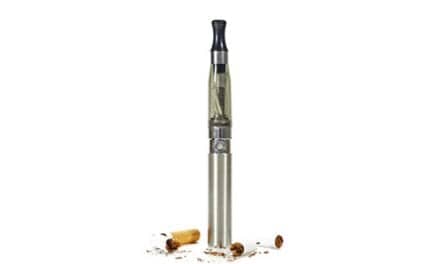Placement on APRV enabled an 18-year-old patient with a history of pulmonary hypertension to breathe spontaneously at lower peak inflating pressures.
Continuous positive airway pressure (CPAP) can be used to establish functional residual capacity. Many times, in disease states such as the adult respiratory distress syndrome, this intervention is insufficient to maintain adequate gas exchange. Downs and Stock1 first described airway pressure release ventilation (APRV) in 1987, as an adjunct to mechanical ventilation. When CPAP is not enough to maintain alveolar ventilation, short release periods (to a lower level of CPAP) enhance carbon dioxide elimination. APRV has been studied2,3 extensively in adults and in the pediatric lung model. At The Children’s Hospital of Philadelphia, APRV in pediatric patients has been compared with synchronized intermittent mandatory ventilation (SIMV). It was determined, during this evaluation, that patients could be ventilated with lower peak inflation pressures using APRV.4 In addition, an evaluation of subjective patient comfort was made. Patients’ ability to breathe spontaneously seemed to be an added benefit.
Case Report
The patient was an 18-year-old female with a history of pulmonary hypertension. After receiving a bilateral sequential lung transplant, she required a course of extracorporeal membrane oxygenation (ECMO). During this time, she received isoflurane via ECMO circuit and fentanyl at 6 mg/kg per hour for sedation. After 11 days, preparation for weaning from ECMO included administering isoflurane through the ventilator circuit as well. Maintaining adequate sedation posed a particular challenge once the patient was removed from ECMO. Isoflurane at 1.5% (delivered through the ventilator) and a fentanyl infusion at 5 mg/kg per hour did not prevent her from thrashing or from pulling on her endotracheal tube. After she had received five rescue doses of midazolam, a midazolam infusion was added to the sedation regimen at 0.2 mg/kg per hour; the dosage was increased to 0.7 mg/kg per hour in less than 24 hours. Isoflurane was discontinued at this time. The patient required a fraction of inspired oxygen (Fio2) of 0.6, an expired tidal volume of 11 mL/kg, a respiratory rate of 26 breaths per minute, a mean airway pressure of 17.7 cm H2O, an inspiratory time of 1 second, an inspiratory-to-expiratory ratio of 1:1.3, a peak inflation pressure of 39 cm H2O, and a positive end-expiratory pressure (PEEP) of 10 cm H2O. Her vital signs and laboratory testing results included a pH of 7.34, a Paco2 level of 55 mm Hg, a Pao2 of 77 mm Hg, a bicarbonate level of 29 mEq, a base excess of 2.9, an oxygen saturation of 94%, a Pao2/Fio2 of 107, a heart rate of 118 beats per minute, and blood pressure as high as 156/94 (116 mm Hg). The patient continued to have periods of agitation and related episodes of cyanosis, during which she required increased levels of oxygen. Two days after being liberated from ECMO, with a fentanyl dosage of 7 mg/kg per hour and a midazolam dosage of 0.7 mg/kg per hour, her ventilation was changed from SIMV to APRV.
| SIMV | APRV | |
| Fentanyl | 7 µg/kg per hour | 4 µg/kg per hour |
| Midazolam | 0.7 mg/kg per hour | 0.7 mg/kg per hour |
| Heart rate | 118 beats per minute | 118 beats per minute |
| Blood pressure | 156/94 (116 mm Hg) | 135/79 (96 mm Hg) |
| Peak inflation pressure | 39 cm H2O | 30 cm H2O |
| Positive end-expiratory pressure | 10 cm H2O | 10 cm H2O |
| Mean airway pressure | 18 cm H2O | 20 cm H2O |
| Expiratory tidal volume | 11 mL/kg | 10 mL/kg |
| Expired volume per minute | 290 mL/kg | 260 mL/kg |
| pH | 7.34 | 7.34 |
| Paco2 | 55 mm Hg | 56 mm Hg |
| Pao2 | 77 mm Hg | 86 mm Hg |
| Bicarbonate | 29 mEq | 0 mEq |
| Base excess | 2.9 | 3.3 |
| Oxygen saturation | 94% | 95% |
| Pao2 over fraction of inspired oxygen107 | 191 | |
| TABLE 1. Comparison of selected values for an 18-year-old female patient whose ventilatory support was changed from synchronous intermittent mandatory ventilation (SIMV) to airway pressure release ventilation (APRV). | ||
While using APRV, the patient appeared to be more comfortable. Her ability to breathe spontaneously at both pressure levels (with minimal work of breathing imposed by the ventilator) enabled this patient to maintain her alveolar ventilation at lower maximal airway pressures without fighting the ventilator.
Her clinical course echoed our observations. Within hours of the institution of APRV, this patient’s fentanyl infusion rate was decreased to 5 mg/kg per hour. By the next morning, it was decreased to 4 mg/kg per hour. There was no need for rescue medications or increased oxygen due to cyanosis or agitation. The patient’s Fio2 was 0.45, and her Pao2/Fio2 increased to 191. Peak inflation pressure in APRV was 30 cm H2O with 10 cm H2O of PEEP, mean airway pressure was 20 cm H2O, exhaled tidal volume was 10 mL/kg, the respiratory rate was 26 breaths per minute, inspiratory time was 1.3 seconds, and expiratory time was 1.3 seconds. The patient’s blood pressure was 135/79 (96 mm Hg) and her heart rate was 118 beats per minute. This patient was successfully weaned from mechanical ventilation after 45 days.
Conclusion
The next area of study at this institution will be the comparison of APRV with SIMV (with automatic flow) using an age-appropriate assessment of comfort. Data to be collected will include the level of sedation required to maintain patient comfort using SIMV with and without automatic flow. Evaluating the sedation levels needed to maintain patient comfort and monitoring whether these levels change based on the mode of ventilation used will provide further insight. The proposal has been approved for the sedation study to begin.
Theresa Ryan Schultz, RRT, CPFT, is a clinical specialist/research and Suzanne M. Durning, RRT, is a clinical specialist/cardiac intensive care, both at The Children’s Hospital of Philadelphia.
References
1. Downs JB, Stock MC. Airway pressure release ventilation: a new concept in ventilatory support. Crit Care Med. 1987;15:459-461.
2. Garner W, Downs JB, Stock MC, Rasanen J. Airway pressure release ventilation (APRV): a human trial. Chest. 1998;94:779-781.
3. Martin LD, Bilenki AL, Rafferty JF, Wetzel RC. Airway pressure release ventilation (APRV) in pediatric acute lung injury model. Crit Care Med. 1990;18:231.
4. Schultz TR, Durning SM, Schears G, et al. Airway pressure release ventilation (APRV) oxygenates and ventilates at lower peak airway pressures (PAP) in children. Crit Care Med. 1999;27:344.









